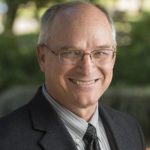Essay Collections—Continuing our Education
Essay Collections—Continuing our Education
Last Sunday, October 30, was Reformation Sunday. Each year on the Sunday closest to October 31st many Protestant churches remember the Reformation, and reflect in sermons or Sunday School on the great themes of the Reformation: Faith Alone, Grace Alone, Scripture Alone, and the Priesthood of All Believers. On October 31, 1517, Martin Luther nailed his “95 Theses” to the door of the Church in Wittenberg. In doing so he called for an academic debate on the sale of indulgences, true Christian penance or repentance, and, as an unintended consequence, initiated the fracturing of medieval Christendom, formation of multiple new Christian churches, and the ‘Reformation” of the Church. Lutheran churches might reflect on Martin Luther; Reformed Churches on John Calvin or the reformation in Geneva; Mennonite churches may reflect on the teaching of Menno Simons, on the history of the martyrs, or on Anabaptist themes like non-violence and reconciliation. Last Sunday we reflected on Martin Luther at my church.
It just happened that I had been reading over the previous week a new collection by the Reformation historian, David C. Steinmetz, now retired from Duke Divinity School. The collection, Taking the Long View (2011), is a series of lectures and talks on the meaning of the Reformation, Protestant doctrine and practice, and its relevance for today. Steinmetz points out that we will find that many of the issues and controversies we face today have been worked out in the past; we might find a different perspective with which to approach them. History becomes thus a resource for us as we attempt navigate through our present struggles and live faithfully as Christ’s church here and now (see the chapters “The Necessity of the Past” and “Taking the Long View”).
Often historians, like scholars in many other disciplines, do not really retire. They rework topics they have taught for many years or finally get to put together work that they began years before and in official retirement have the leisure to pursue. Steinmetz’s collection gathers together many such pieces, lectures that haven’t been published, occasional reflections on current topics, and a few previously published pieces that deserve a wider audience. I particularly enjoyed his reflections on Catholic interpretations of Luther (ecumenical approaches can open us to insights we haven’t seen before), on how conversion was understood by our sixteenth-century teachers (not the same as in the American revivalist practice), on the “Domestication of Prophesy” (how and why private teaching must be tested against Scripture), and how North American and European Churches are sometimes viewed by African, Asian and South American churches (not always trusted for a variety of reasons) and why the North must listen to them.
I pick up collections like this whenever I see them. As a professor I look for how prominent masters in the field have thought about and taught our subject. I first met Steinmetz’s work when I was in my graduate studies. My professor in Reformation theology and history, Jane Dempsey Douglass, was a student of the same scholar with whom Steinmetz studied, Heiko Oberman, one of the most prolific scholars in the profession. Oberman’s work forged a new path into understanding the Reformation by looking at it in “medieval perspective.” Douglass introduced me to Steinmetz’s work on Luther and his confessor and spiritual guide Johann von Staupitz. I have been reading and using Steinmetz’s work ever since. His collection Reformers in the Wings offers brief biographies and assessments of leaders from all of the different branches of the Reformation. His approach to these theologians and lay leaders has made it more than once into my classes.
There are other collections that I can recommend. Rober Louis Wilken, early church historian at the University of Virginia, about fifteen years ago gathered a series of pieces into a volume entitled Remembering the Christian Past (1995). He too reflects on how history can guide us in “Who Will Speak for the Religious Traditions,” and “Memory and the Christian Intellectual Life.” And he reflects on some themes we consider today and about which the early church offers some help in “Religious Pluralism in Early Christian Thought,” “Not a Solitary God: The Triune God of the Bible,” and “Loving God with a Holy Passion.” Wilken reminds us that we are part of a church with continuity, with a long history, and with which the Holy Spirit has always been a present guide.
My former students might find interesting a collection by Ellis Sandoz, emeritus professor of political science at Louisiana State University, Republicanism, Religion, and the Soul of America (2006). I have used Sandoz’s work in my course on the history of political theory. One semester we read another of his volumes, A Government of Laws, on the philosophical and religious traditions behind the origins of American government. Members of the class wrote on various topics in the book, and I sent a few of the essays to Prof. Sandoz for his comment. He responded graciously and offered further insight for us to consider. In this recent volume he picks up some perennial topics that are critical to our self-understanding and perhaps our future, “Republicanism and Religion,” “The Foundations of American Liberty and the Rule of Law,” and “Americanism: The Question of Community in Politics.”
These reflections are intended to illustrate the kind of reading we can use to continue our education, whether we are teaching, are students, or have graduated and moved on into our professions. The final test of the quality of our education is that we know how and want to continue it. Essay collections like those of Steinmetz, Wilken and Sandoz offer us ready ways into our ongoing education.




